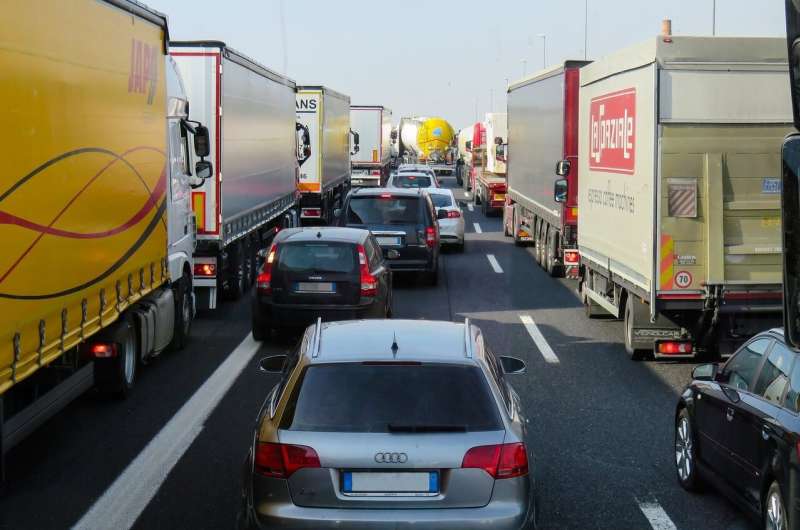Moving hazardous goods in the smart city

The transportation of hazardous materials through densely populated areas, such as cities, is a necessary part of modern life, but comes with risks of spills and leaks, explosions, environmental issues, and public health concerns. New research in the International Journal of Simulation and Process Modelling, has used a transportation management simulation to look at problems that might arise in moving hazardous materials within a city when traffic congestion is common.
Luiz Antonio Reis, Sergio Luiz Pereira, Eduardo Mario Dias, and Maria Lídia Rebello Pinho Dias Scoton of the Polytechnic School of the University of São Paulo in Brazil explain how their simulation can be used to reduce risk and find optimal routes for the transport of hazardous materials. By suggesting ways that traffic might be better managed overall in a city, they also demonstrated how to improve city life. The advanced simulation system makes a huge contribution to reducing traffic jams and their consequences on fuel consumption and greenhouse gas emissions, the team writes.
The team points out that Brazil’s National Transport Confederation says that road transport is responsible for 61% of cargo transportation, and practically all of the dangerous cargo transportation in the country’s urban areas. “Thus, the greater the control and standardization of operating procedures for this type of transport, the better and safer it will be for society,” the team writes.
As city infrastructure and control mature and we can begin to talk about “smart” cities, there is a pressing need to address the issues of real-world logistics and transportation which can succumb to the whims of real-world traffic and drivers and the incidents and accidents that plague them. To make use of the output from their simulation there is thus a need for greater control and traffic awareness and management in the urban environment.
Obviously, registered vehicles with hazardous cargos will be tracked continuously, but private and even commercial traffic will not other than through the closed-circuit television network and monitoring present on many roads and perhaps drone or helicopter surveillance of traffic congestion as it arises. As such, there need to be stronger connections formed between different stakeholder departments who might then share timely information and using the team’s model be able to respond quickly to help avoid congestion issues and potential accidents involving, primarily, the hazardous cargos, but also the wider traffic base in a city.
Luiz Antonio Reis et al, Traffic jam prediction using hazardous material transportation management simulation, International Journal of Simulation and Process Modelling (2021). DOI: 10.1504/IJSPM.2021.117336
Citation:
Moving hazardous goods in the smart city (2021, September 9)
retrieved 9 September 2021
from https://techxplore.com/news/2021-09-hazardous-goods-smart-city.html
This document is subject to copyright. Apart from any fair dealing for the purpose of private study or research, no
part may be reproduced without the written permission. The content is provided for information purposes only.
For all the latest Technology News Click Here
For the latest news and updates, follow us on Google News.
